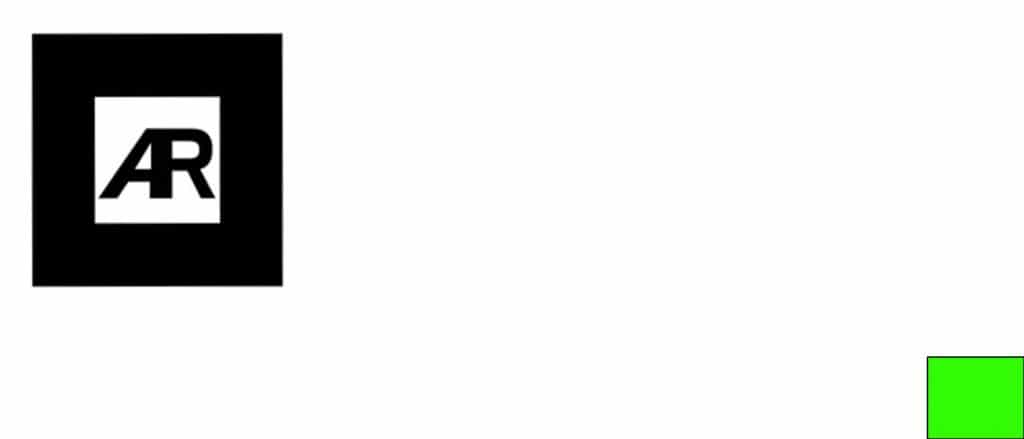Introduction
The “Labyrinth Speed Challenge” requires teams to design and manufacture a remote‐controlled car that can complete the given track while dragging a weighted metal cube with it. In addition to the physical obstacle course the car needs to be light weight and fast, taking the least possible time to finish the line. To accomplish the requirements, the group designed a three‐wheeled car with two wheels in the rear attached to two motors and one frontal wheel without a grip around it to reduce friction. The car had to make two sharp turns to complete an S‐shaped track which is 0.3 m wide and 2.7 m long. The design approach focused on achieving as little weight as possible to gain speed and therefore a soft wood was chosen as the car base.
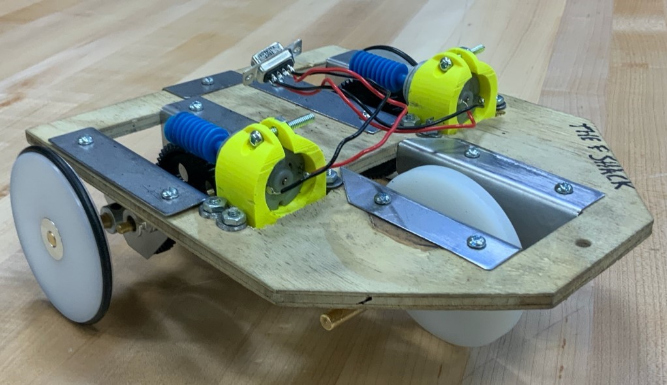
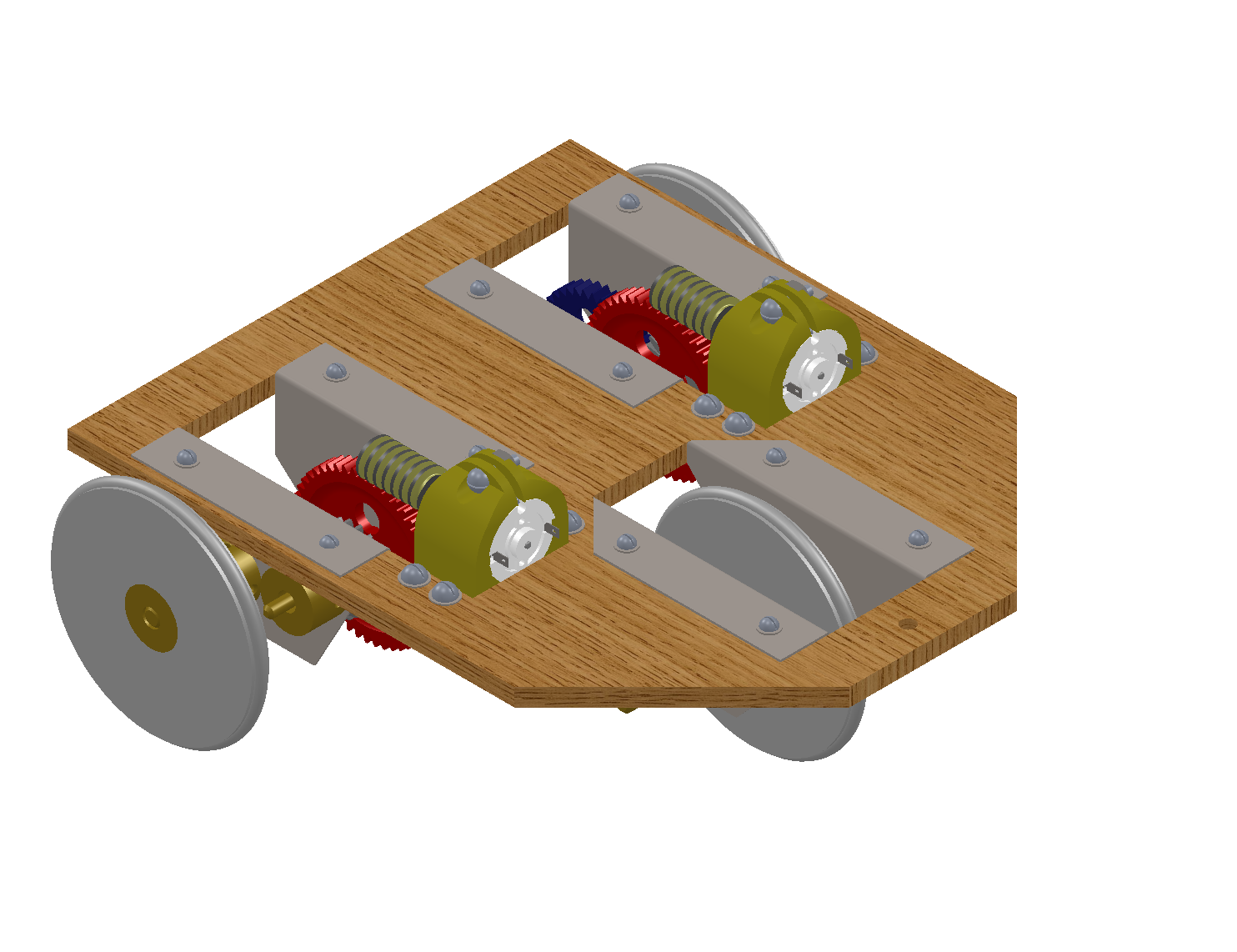
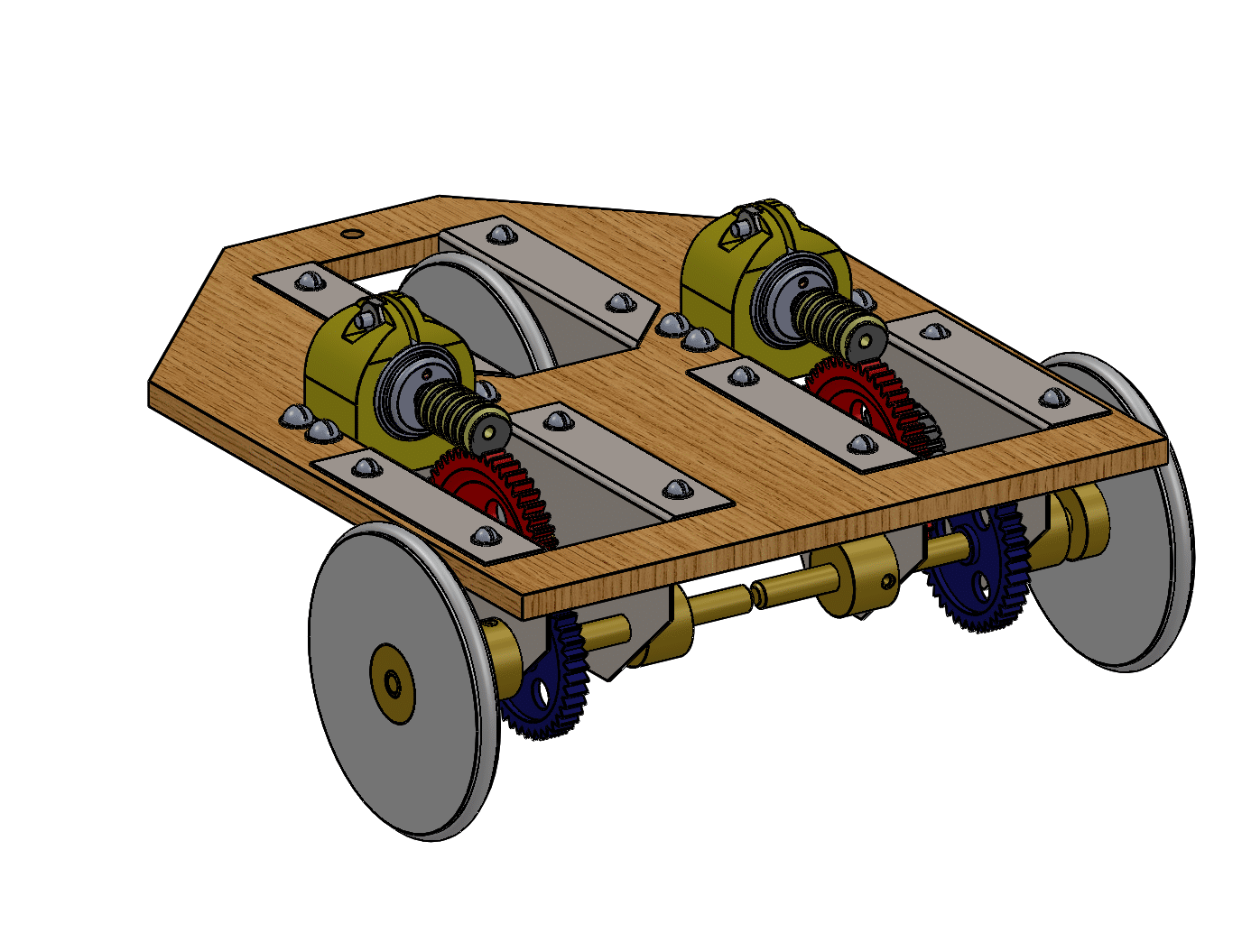
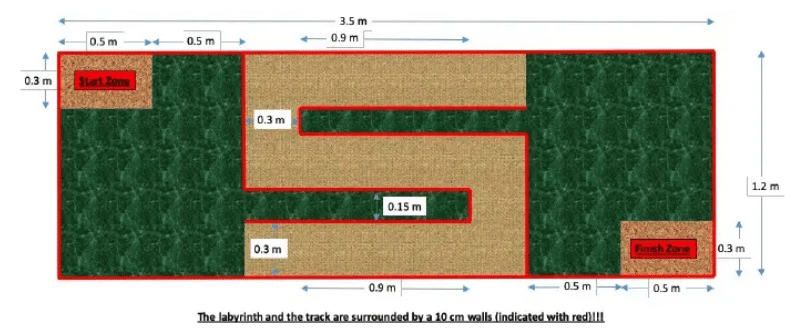
Description
The car was designed as a three wheeled concept, with a singular wheel at the front of the vehicle, and two wheels at the rear. The wheel at the front was attached under the vehicle and fastened into place. This front wheel was fixed to stay rigid, and skid along the ground which facilitated steering while maintaining simplicity. The rear wheels, however, lied on two separate fixed axels as each wheel was connected to its own individual motor. As each motor powered a separate wheel and by using the locking properties of a worm gear the car was able to turn and handle quite easily. The base of the vehicle was constructed of wood and was shaped as a ‘house’ (rectangular with a level triangular extension on top edge).
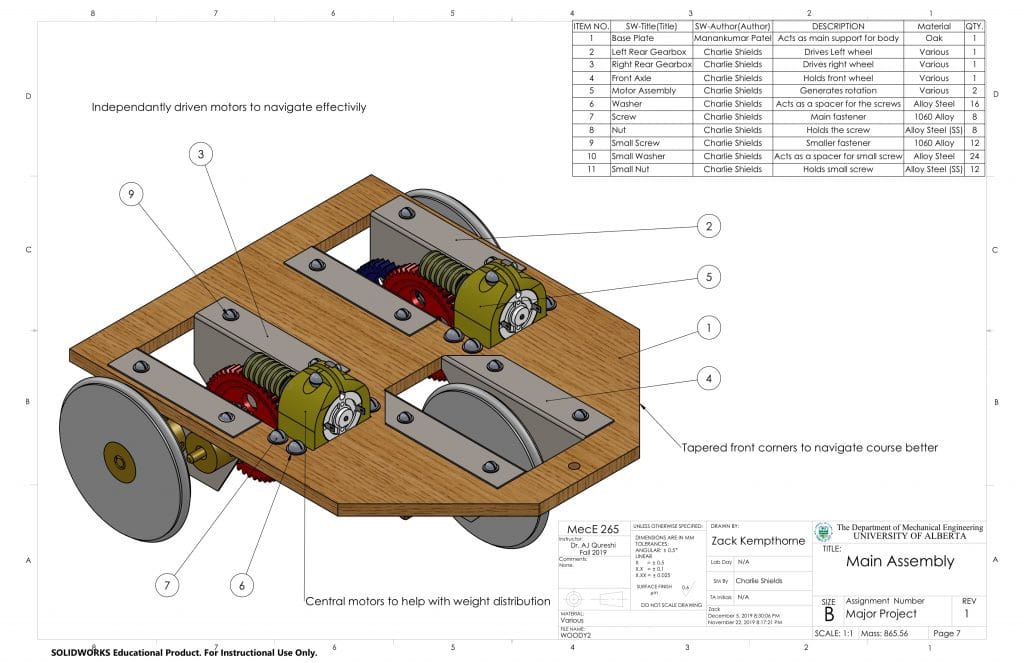
Results
The vehicle’s speed on test day was unexpected, running much faster than predicted. The car ran the circuit in 15 secs approximately half of the calculated prediction, and took fourth place overall out of twenty-three groups. There were some issues encountered throughout build process such as obtaining the proper gear alignment. The wooden base for the car became warped after the water-jetting process, which in turn affected the alignment of the measured holes for the axles on the sheet metal. This issue was overcome by re-soaking the wood in water and baking it flat. The team successfully completed the competition and met all accompanying due dates throughout the project. You can use your left and right mouse buttons to rotate, zoom or move the model to the right, or by using gestures if on a mobile device.
AR Representation
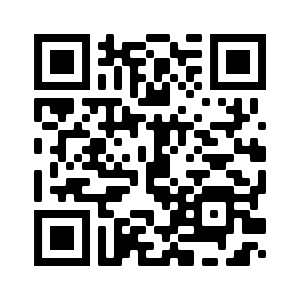
Use your cellphone and navigate to the QR code on the left to activate a scale replica of the challenge in Augmented Reality below. Here you can set a theoretical calculated velocity and attempt to navigate through the course in the fastest time possible. The end goal is indicated by the green square. This AR experience was built using AR.js to animate and script the controls. If you pinch and zoom you can make the car larger to see the animated gearboxes as well. FYI, this is just a proof of concept and has many issues, such as being able to drive through the walls.
